Summary
- Semester break
- Electric charges
- Conductors & insulators
klm
If a glass rod is rubbed with silk, is the charge on the silk positive or negative?
A. positive
B. negative
C. The silk is neutral.
Answer
PSE6 23.8
Suppose 1.0 g of atomic hydrogen is split with the protons on the north pole and electrons on the south
(dEarth = 12,740 km). What is the force on each pole that is produced by the charge?
A. 5.74×10−42 N
B. 1.73×102 N
C. 6.55×104 N
D. 5.15×105 N
Answer
PSE6 23.12
Challenge question A charge −1 µC and mass 1 mg lies midway between two +2 µC charges separated by 2 mm.
What is the period of oscillation of the 1 mg mass?
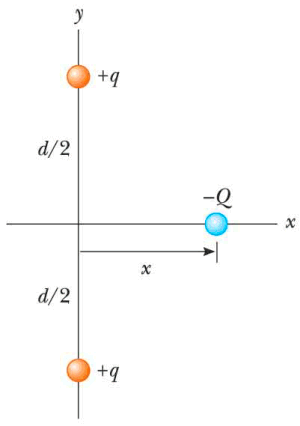
A. 33 ps
B. 59 ns
C. 1.0 µs
D. 2.2 ms
Answer
Knight 27.stt01
The three depicted charges have the same magnitude. At the dot, the electric field points ______.
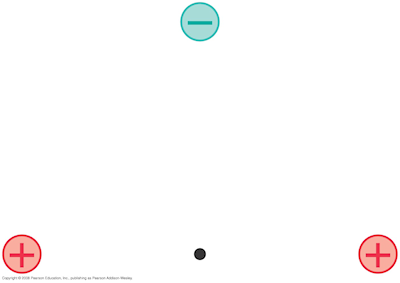
A. left
B. right
C. up
D. down
E. nowhere because it is zero
Answer
POP4 19.15
Charges 1, 2, 3, and 4 nC are at the corners of 1-m square. What is the electric field at the 1 nC charge?
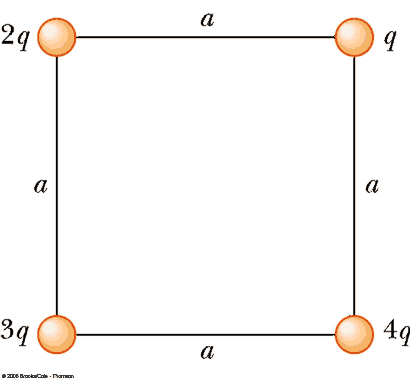 A. 53.2 N/C at 58.8°
A. 53.2 N/C at 58.8°
B. 22.9 N/C at 45.0°
C. 15.4 N/C at 31.2°
D. 7.25 N/C at 27.3°
Answer
APB 1998.16
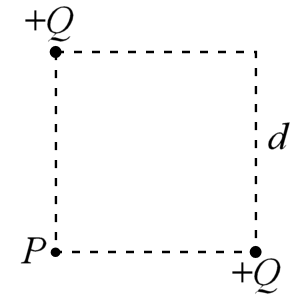
The figure above shows two particles, each with a charge of +Q, that are located at the opposite corners
of a square of side d. What is the direction of the net electric field at point P?
A. ↖
B. ↗
C. ↙
D. ↘
E. ↓
Answer
APB 1998.13
Which of the following is true about the net force on an uncharged conducting sphere in a uniform
electric field?
A. It is zero.
B. It is in the direction of the field.
C. It is in the direction opposite to the field.
D. It produces a torque on the sphere about the direction of the field.
E. It causes the sphere to oscillate about an equilibrium position.
Answer
B. negative
By definition glass rubbed with silk is positively charged. That means electrons were removed from the glass and are now sticking onto the silk, giving the silk a net negative charge.
D. 5.14×105 N


C. 1.0 µs
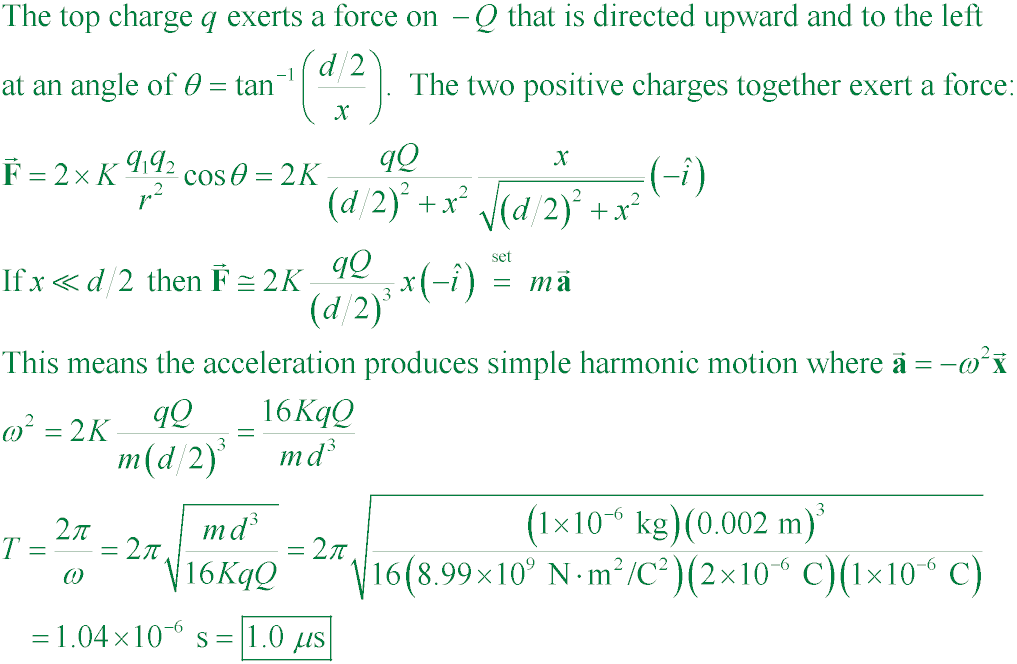

C. up
The fields from the left and right charges cancel, but the field from
the top negative charge does not cancel and points upward.

A. 53.2 N/C at 58.8°
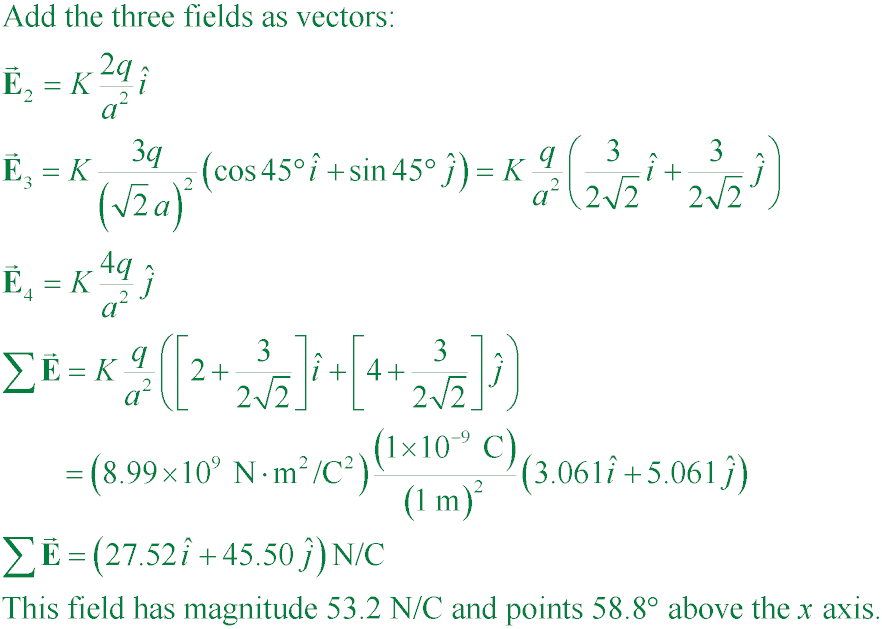
C. ↙
The electric field points away from positive charges, thus the contribution from
the upper left Q at point P is downward and the contribution from the lower right Q at
point P is toward the left. The vector sum of these two contributions is down and to the left.
A. It is zero.
The electrons on the conducting sphere will move around in response to the electric
field, which represents force per charge. Positive charges on the conducting sphere will be pushed in the direction
of the field and negative charges will be pulled in the opposite direction. Because the field is uniform these two
forces are equal in magnitude and opposite in direction, resulting in a zero net force on the sphere. If the field
were nonuniform, such as the field due to a nearby charged object, the attractive force on the near side of the
sphere would be stronger than the repulsive force on the far side, and the neutral sphere would be attracted to the
charged object. This is the idea behind induced polarization, such as when a charged balloon sticks to a neutral wall.
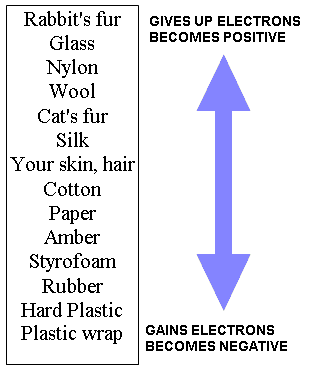

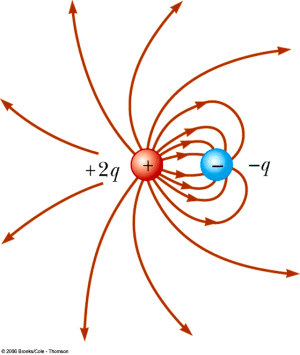
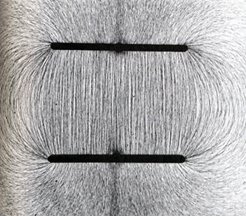
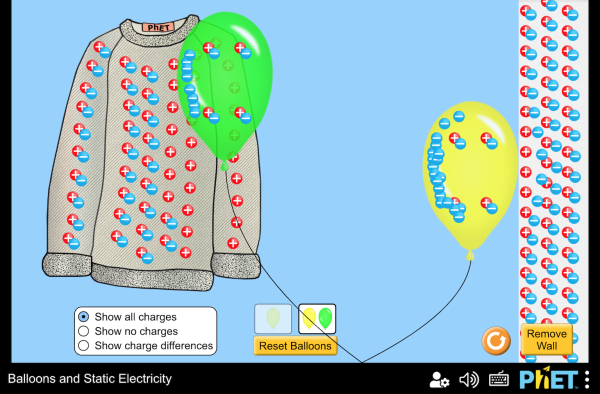
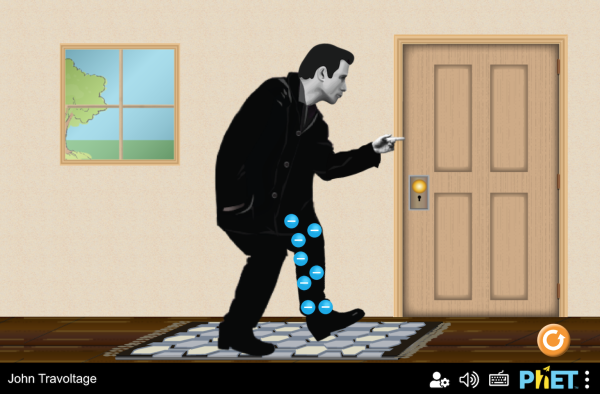


 A. 53.2 N/C at 58.8°
A. 53.2 N/C at 58.8°


